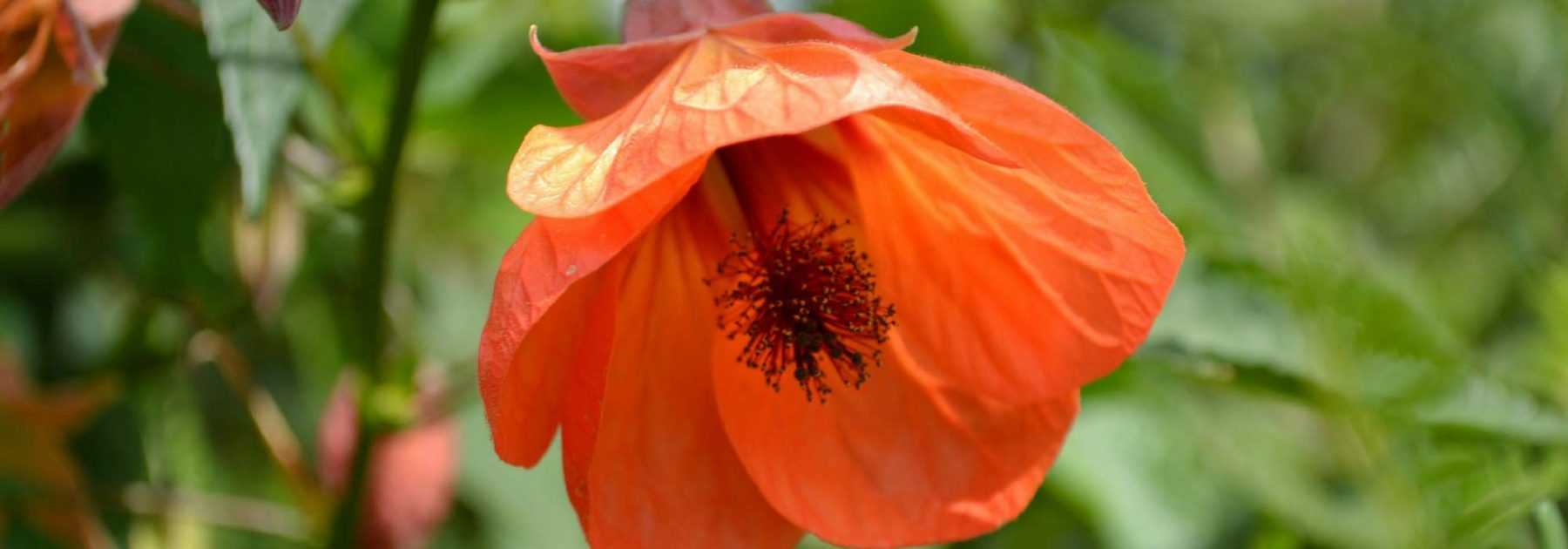
Abutilon: Planting, Pruning and Care
Contents
The Abutilon in a few words
- The abutilon offers abundant flowering that lasts for many months
- Not very hardy, it can only be planted outdoors in mild climates
- It’s the perfect terrace shrub
- It enjoys sunny positions but not scorching sun
- It prefers cool, well-drained soils
Our expert's word
The Abutilon, sometimes called the “Chinese Lantern” or “Parlour Maple”, is a beautiful shrub with striking flowers. It is prized for its elegantly lobed, slightly exotic foliage and its vibrantly coloured flowers from spring through autumn. From the trailing Abutilon (Abutilon megapotamicum) to the Abutilon pictum with its variegated leaves, and the multi-coloured hybrid Abutilon (Abutilon hybridum), the Abutilon is a highly ornamental shrub.
This warmth-loving plant, not very hardy (-5 to -10°C), is easy to grow in the ground in mild climates. In cooler regions, grow Abutilon in pots to be brought indoors during winter.
Abutilon thrives in full sun or partial shade in moist, well-drained soil.
Whether in pots or in the ground, in borders or trained against a wall, this charming shrub adds a touch of exoticism and colour to the garden.
Learn how to successfully plant Abutilon in pots, prune it, or take cuttings—our experts answer all your questions about this generous, low-maintenance shrub.
Description and botany
Botanical data
- Latin name Abutilon
- Family Malvaceae
- Common name Abutilon
- Flowering d'avril-mai jusqu’à l’automne
- Height 1 à 5 m
- Exposure Soleil, mi-ombre
- Soil type Tous, bien drainés
- Hardiness -5°C-10°C
The Abutilon genus comprises approximately 150 species of herbaceous, climbing and shrubby plants, along with numerous horticultural hybrids. Abutilon or “Flowering Maple” is a flowering shrub that, like hollyhocks and hibiscus, belongs to the Malvaceae family.
Only a few shrubby species native to Chile or Brazil are cultivated in France, including the most well-known: Abutilon megapotamicum, a trailing or even climbing species when trained, which has given rise to many cultivars; Abutilon pictum with variegated foliage; Abutilon x hybridum or hybrid Abutilon; and Abutilon vitifolium, certainly one of the largest abutilons.
The growth habit varies by species, ranging from weeping forms requiring support to bushy and upright. The branches can be slender and flexible or erect and sturdier. It can form an extensive ground cover or a beautiful, vigorous shrub reaching 1 to 3.5 metres in height with a similar spread.
Its growth rate and longevity vary: from moderate to fast, short-lived or relatively long-lived depending on the species.
The foliage, evergreen to semi-evergreen in mild climates and deciduous elsewhere, consists of simple or deeply lobed leaves with 3 to 7 serrated edges, resembling maple leaves—hence the nickname “Flowering Maple.” The leaves of Abutilon vitifolium recall those of grapevines.
Lanceolate, oval to rounded, the leaves measure 10 to 15 cm long, are sometimes slightly hairy, and develop on young shoots occasionally covered in grey down. They can be bright green, light green, dark green, grey-green, or even variegated, speckled, or streaked with gold or pale yellow depending on the cultivar.
From May to October without interruption, abutilon produces luminous, colourful flowers. This shrub bears an abundance of striking blooms shaped like rounded bells, Chinese lanterns, hanging globes suspended by long stalks, or open cups. The flowers are usually solitary in leaf axils, sometimes grouped in clusters or panicles.
Measuring 4 to 8 cm long or wide, they feature a beautiful calyx in shades of dark pink, orange, yellow, white, red, and occasionally blue or mauve, centred around prominent, colourful stamens. Hybrid abutilons produce the largest flowers in spectacular hues ranging from pure white to lemon yellow, through every shade of pink, orange, apricot, lavender blue, purple, and even fiery red.
Some are veined with more intense colours (Abutilon pictum), while others are strikingly bicoloured in yellow and red (Abutilon megapotamicum or “Chinese lantern”), reminiscent of the Belgian flag!
The blooms persist tirelessly from spring until frost in some species, followed by the formation of numerous seeds.
Abutilon is not very hardy and can only be planted outdoors in mild climates. This highly floriferous plant is undemanding regarding soil type. It thrives in moist but well-drained soil, rich in humus, in non-scorching sun or partial shade.
Moderately hardy (from -5 to -10°C depending on the species), it can only be planted in the ground in mild regions, south of the Loire, along the Atlantic coast, and in Mediterranean areas. Elsewhere, it should be grown in a large pot on the terrace from April to October and brought indoors for winter to protect it from severe cold.
Abutilon shines against a backdrop of dark evergreens, in shrub borders, as a standalone feature on a lawn, trained against a warm wall, or as ground cover. In colder regions, on terraces and balconies, its abundant flowering will draw attention.
Main species and varieties
While there are around 150 species of abutilons and numerous horticultural hybrids, only a few species are cultivated in France.
The most popular
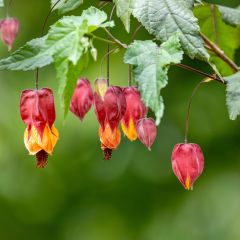
Abutilon megapotamicum
- Blütezeit July to November
- Höhe bei Reife 2 m

Abulilon suntense
- Blütezeit June, July
- Höhe bei Reife 3 m
Planting
Where to Plant Abutilon?
Abutilon is not an orangery plant: it is grown outdoors in the garden in favoured regions and in containers to be stored in winter in other areas.
Not very hardy, abutilon prefers mild winters and sunny exposures in Mediterranean regions or along the Atlantic coast.
It dislikes frost and draughts and cannot withstand temperatures below 10°C. A. megapotamicum is the hardiest of the abutilons (-10°C). However, it is capable of regrowing from the base without difficulty after enduring brief frosts, if planted in a very sheltered spot.
It grows in full sun in regions with cool summers or in partial shade in hot climates, sheltered from strong winds, in fertile soil that remains moist in summer and well-drained. Once established, it will tolerate drought better.
Abutilon dislikes confined spaces: give it room to grow!
It can be planted in borders or as a standalone specimen. A. megapotamicum can be trained against a south-facing wall or on a trellis, or left untrained as ground cover. In regions with harsh winters, it should be grown in pots on a terrace.
When to Plant Abutilon
Plant Abutilon in spring (April-May) or in autumn (September-October) in mild climates.
How to Plant Abutilon
In the ground
Choose a sheltered, south-facing spot, preferably near a wall, especially to train Abutilon megapotamicum, which, lacking tendrils, will not cling to its support unaided.
- Dig a hole 3 to 5 times wider than the root ball
- Place a good layer of gravel at the bottom of the hole
- Plant the shrub at soil level, in the centre of the hole
- Fill the hole with a mix of compost, well-rotted manure and a handful of river sand mixed with the excavated soil
- Firm the soil with your foot
- Water thoroughly after planting and during summer heatwaves
Planting Abutilon in pots
Planting Abutilon in pots is straightforward, provided the substrate is very free-draining and moist but without waterlogging.
- Choose a large pot, 40 to 70 cm in diameter
- Add a drainage layer (gravel, broken terracotta or clay pebbles) at least 4 cm deep at the bottom
- Fill with a mix of half garden soil, a quarter potting compost and a quarter well-rotted manure
- Keep the substrate moist throughout the growing season by watering regularly
- Move the plant to a bright, cool room (between 5 and 15°C) at the first sign of frost (for more details, read: “Abutilon: Winter Care“)
- Bring it back outside in spring, placing it in a sheltered spot away from wind and cold
→ Learn more about growing Abutilon in pots
Size and care
Abutilon is easy to grow in regions without severe frost: regular watering and fertiliser will be enough to maintain this rather greedy plant in good health.
In the ground
In summer, water copiously and regularly to keep the soil moist but not waterlogged. Once established, it’s quite drought-resistant. In winter, watering is unnecessary.
It will show rapid growth if its soil is regularly enriched.
Each year, in autumn, loosen the soil around the base of the plant and add a few spadefuls of well-rotted compost to the surface.
Throughout the growing season, from spring to autumn, add a liquid fertiliser to the watering water every month.
Gradually train the branches of A. megapotamicum onto their support.
In regions where frost is a concern, mulch the base with straw or dry leaves.
Caring for Abutilon in pots
Pot cultivation suits this shrub very well, though it requires some attention. Water abundantly every day in summer. In spring and autumn, simply avoid letting the rootball dry out completely. In winter, reduce watering to once every 10 days and stop fertilising.
- During growth, feed with flowering plant fertiliser every fortnight.
- Before the first frosts, in late October, bring the abutilon into a cool (greenhouse, conservatory or winter garden) and bright room (no more than 15°C). It needs this cool period to flower well the following year.
- Repot every spring into a slightly larger pot with fertile compost.
- Once frosts are no longer a risk, move your plant outdoors to the balcony or garden.
Pruning abutilon
Annual pruning is necessary. Abutilon only requires light pruning which will encourage new spring growth and help maintain a compact shape.
When to prune?
In early spring, in February-March, before flowering.
How to prune?
- Remove dead, tangled and misplaced branches to open up the centre of the plant
- Shorten stems by one third
- As it grows, pinch out (cut with fingers or secateurs) the tips of young shoots to encourage branching and maintain a floriferous abutilon
- Remove faded flowers as they appear
- If frost has damaged some foliage, heavy pruning may be needed in late winter: it will regrow from the base without problems.
→ Learn more in our tutorial: How to prune an Abutilon?
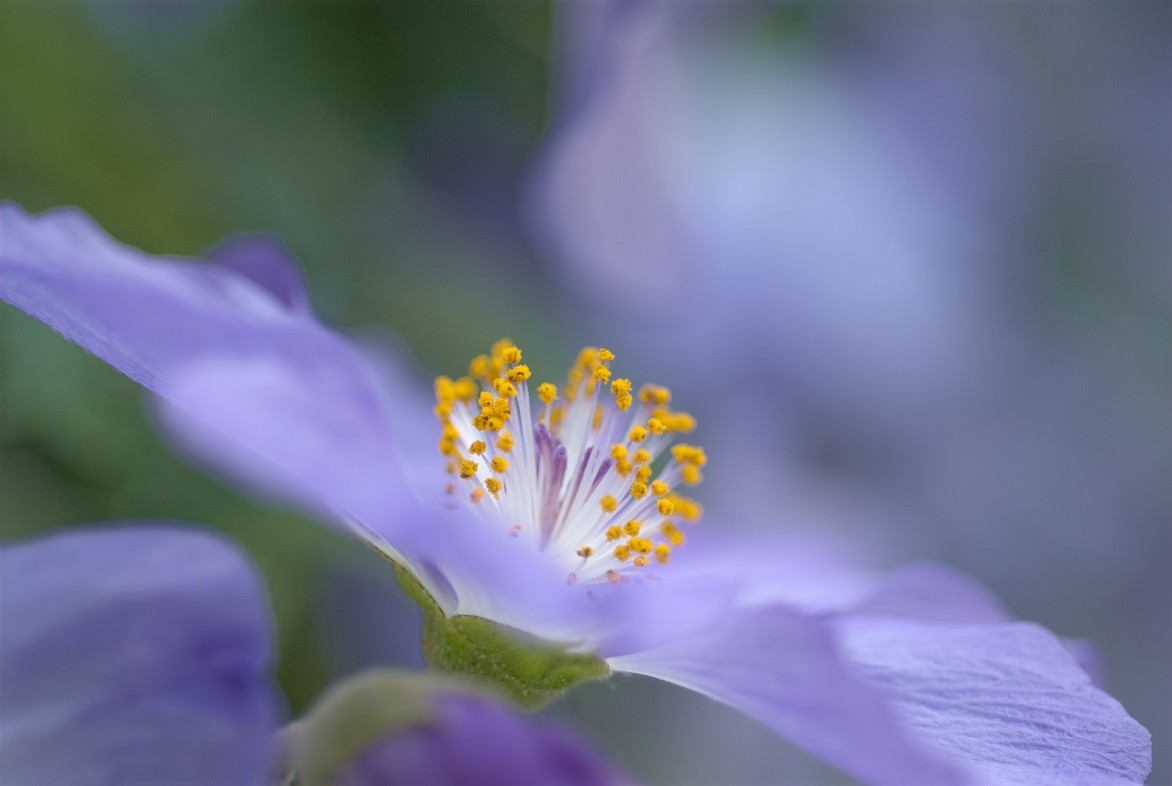
Abutilon suntense flower.” width=”1172″ height=”786″ /> Close-up of the golden stamens of an Abutilon suntense flower.
Diseases and potential pests
When planted in the ground and well-established, the abutilon is spared from most diseases and has no serious natural enemies. However, when growing conditions are not ideal, the abutilon becomes vulnerable.
It may be infested by aphids and caterpillars without being severely affected: spray the plant with soapy water made with black soap or Marseille soap.
In poorly drained soil, it may show a strong susceptibility to powdery mildew, characterised by a white, powdery coating on the leaves: spray with horsetail decoction or nettle manure.
Propagation
Abutilon can be easily propagated from softwood cuttings in spring or semi-hardwood cuttings in August-September.
How to take Abutilon cuttings
- Cut just below a node, selecting a stem with 5 buds
- Plant it by inserting 3 buds out of the 5 into a well-draining mix of sand and compost
- Keep the growing medium moist under a plastic cover until rooting occurs, which typically takes about 1 month
- Transplant your cuttings into pots or directly in the ground the following spring
Express cutting method: You can also propagate young stems simply in water: once roots appear, transfer the cutting to a pot of waterlogged compost. Allow the growing medium to dry out over a 15-day period. Let the young plants harden off until autumn before transplanting them outdoors.
→ Learn more in our tutorial: How to propagate Abutilon?
Pairing Abutilon in the Garden
Flowering continuously from late spring to early autumn, the Abutilon lends itself to all types of compositions, in the romantic scenes of a white garden or in a lush and colourful summer display.
It will stand out beautifully against a dark foliage backdrop or in a shrub border.
It combines beautifully with tall herbaceous plants such as foxgloves, delphiniums, and silvery globe thistles.
Its flowering season makes it ideal for pairing with bushy roses and early-flowering buddleias.
Upright varieties (A. vitifolium, Abutilon x suntense) harmonise well alongside summer-flowering shrubs like hibiscus, abelias, fuchsias, and oleanders.


An example of a hedge combination: Abutilon x Suntense – Abelia grandiflora – Hibiscus syriacus ‘Oiseau Bleu’ – Nerium oleander – Hibiscus syriacus ‘Blue Chiffon’.
Climbing species like Abutilon megapotamicum pair well with other twining climbers such as Sollya heterophylla, a charming small vine for mild climates, Campsis capreolata, a strikingly original large vine, Hardenbergia violacea, or even Solanum rantonetti or jasminoides.
The Abutilon will make an elegant support for clematis or honeysuckle. Potted specimens look stunning surrounded by black-eyed Susans or nasturtiums.
→ Discover more ideas for pairing with Abutilon in our advice sheet!
Useful resources
- Discover this mild climate shrub, featuring beautiful foliage and long-lasting flowering
- How to grow an abutilon in a pot?
- Abutilon: How to choose the perfect variety for your garden or terrace?
- Abutilon diseases and pests: how to identify, prevent and treat them?
- Subscribe!
- Contents


































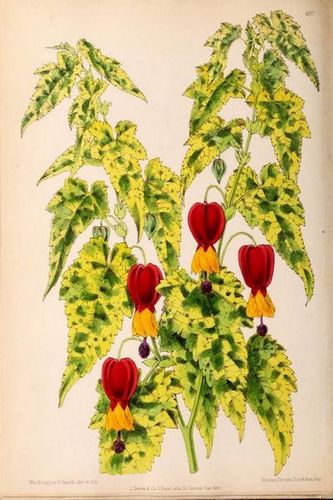
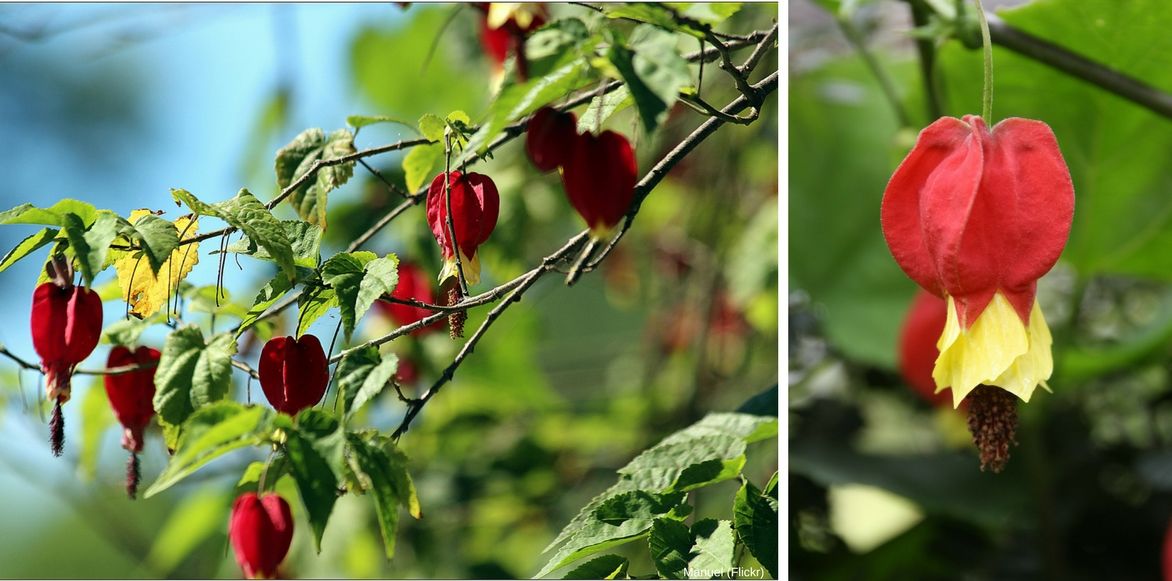
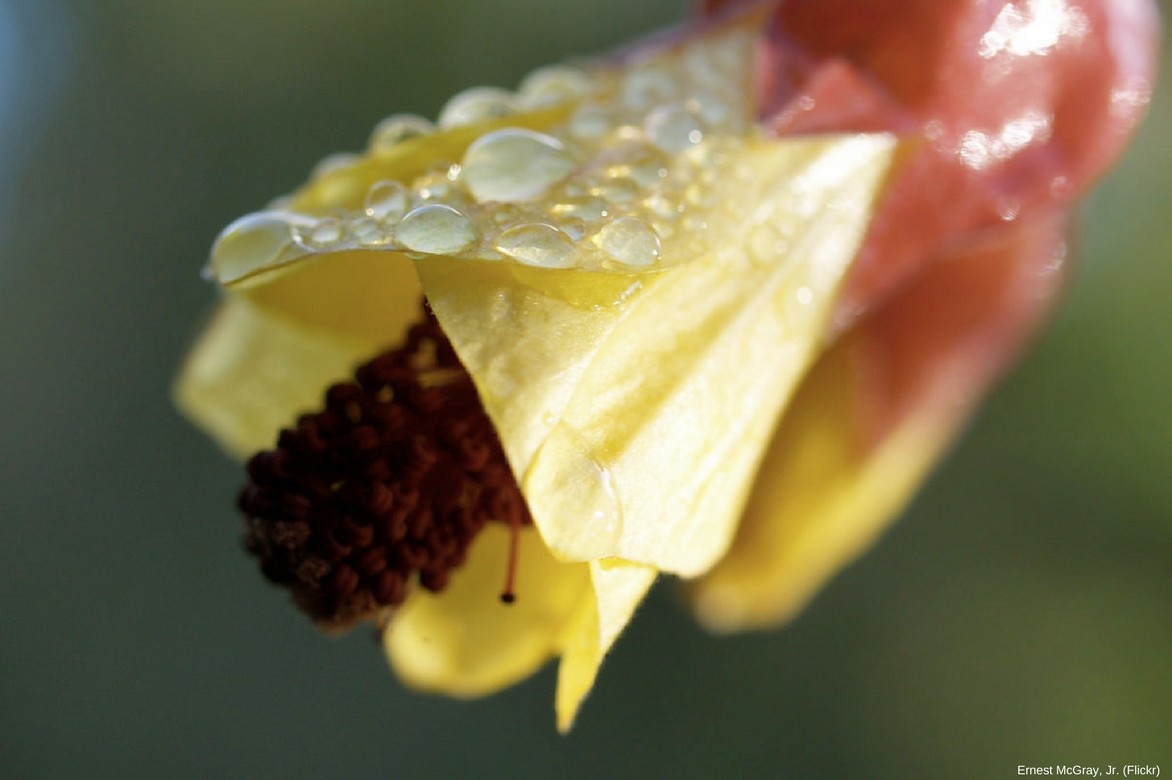
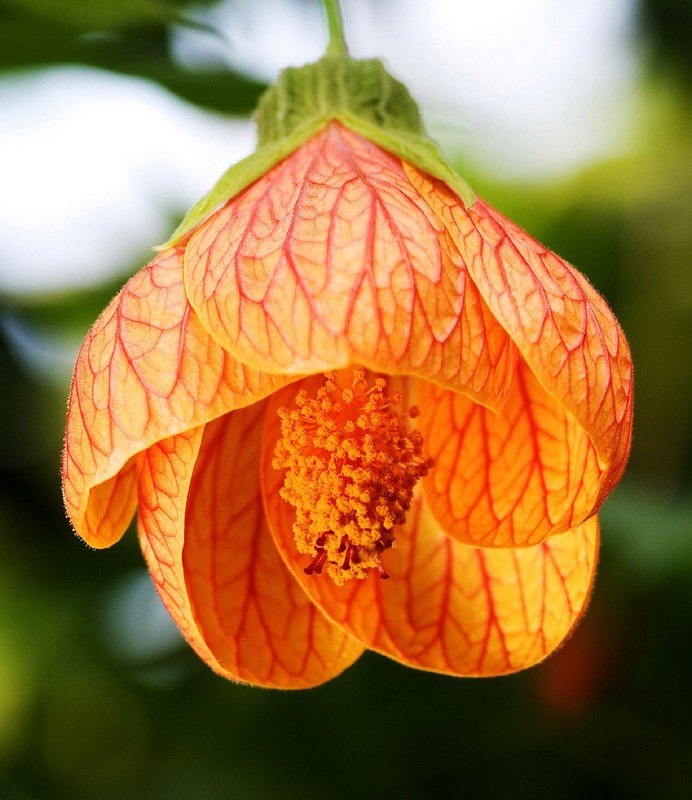

Comments